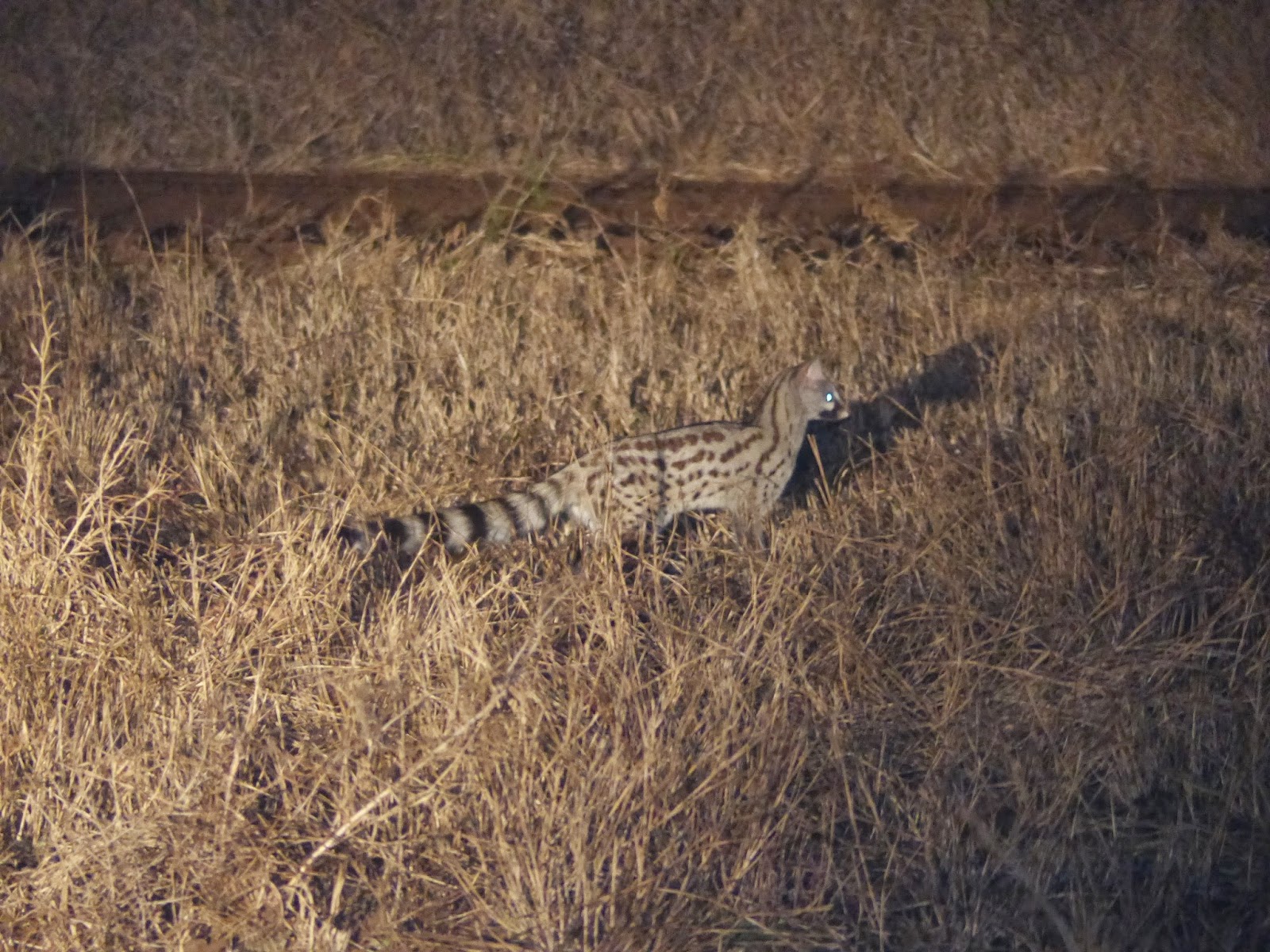On Wednesday, July 23 we
embarked on a three-day wilderness trail out of Kruger’s Pretorius Kop
camp. After an hour’s drive along with
the other six guests, we arrived at our home for the next three days, a camp
site situated on a small river with four tents and a common area for dining, as
well as a kitchen and tents for our guides.
Rifle in hand and in a
slightly militaristic tone, Raymond – one of our two guides – explained the
trail rules. “If I say move right, you
move right, understood?” And for good
reason; not five minutes into our walk, six white rhinos slowly trotted into
view towards us, abruptly interrupting our predetermined path.
As directed, we quickly scrambled up a rock where we could safely admire the rhinos as well as a panoramic view of the surrounding bush. The rest of the walk was more predictable, including sightings of elephants, impala, and kudus from a safe distance.
As directed, we quickly scrambled up a rock where we could safely admire the rhinos as well as a panoramic view of the surrounding bush. The rest of the walk was more predictable, including sightings of elephants, impala, and kudus from a safe distance.
Following a 3-hour hike,
we stopped about thirty minutes away from our return to camp and lunch, where Saul
– our second guide – enthusiastically pointed out a large herd of buffalo in
the distance – “about 3 km away,” he estimates.
“Let’s take a vote, who wants to hike over there?” he jokes. Due to the unanimous response, he (less
enthusiastically) concedes, “OK, but we shoot straight there and back. No stopping – does everyone have water?” After a double-time one hour hike straight
out (straight meaning no stops, not a straight line, as we were always
following meandering animal paths rather than fixed hiking trails), we were
treated to the close-up site of a massive herd of buffalo, who seemed to be
just as intrigued with us as we were by them.
Day 2
Once again, our hike
started promptly at 6:30 am. A less
exciting day overall: only some baboons and a herd of wildebeests. The sound of a few lion roars in the distance
set our path for the day, but the rangers were unable to find the pride’s
tracks and the roars eventual dwindled, so that we were unsuccessful at finding
the cat.
About thirty minutes away
from camp we noticed a bull elephant on our left. This was not a problem at all until two
rhinos came into view on our right. The
rhinos quickly changed direction and aimed straight at us. Fortunately, as Raymond vehemently directed
us to get closer together and stand behind a bush, the rhinos turned
around. Heart racing, we completed our
walk for the day, always on the lookout for rhinos.
Day 3
Our last day, we were
allowed to “sleep in” until 6 am before a hearty breakfast and drive back to
Pretorius Kop. Unfortunately, still no
leopard sightings on our final game drive, but we did see more rhinos! Overall, it was an amazing three days, with
extremely capable guides and a great group of cohorts on our trail (one South
African couple, a British university student and a German family).
Updates from our three days in Swaziland soon!
#stephandgio















































